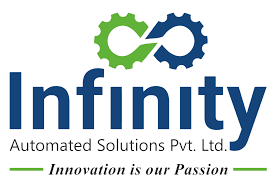At Infinity Automated Solutions, we are proud to be India's first and original innovator in secondary packaging automation. With 10+ years of engineering excellence since 2015, our team of 125+ engineering professionals designs and manufactures reliable checkweighers, vision inspection systems, and automation solutions that help FMCG, Food, Pharma, and Automotive industries work smarter, faster, and better.
Our Specializations
We specialize in secondary packaging machines, end-of-line packaging solutions, conveyors, check weighers, balers, bagging machines, and automatic or semi-automatic feeding and conveying systems that maintain consistent performance day after day. Our comprehensive range includes quality control systems, vision inspection systems, and complete end-of-line automation solutions for manufacturing facilities.
Why Choose Infinity Automated Solutions
India's first secondary packaging automation company, pioneering innovation since 2015
A decade of innovation and engineering excellence with continuous R&D investment
800+ successful installations worldwide across multiple industries and countries
Trusted by leading FMCG, Food, Pharma, and Automotive brands for quality and reliability
Complete end-of-line automation solutions under one roof - from design to manufacturing to installation and support
Driving Packaging Innovation Forward
Infinity Automated Solutions continuously introduces new, efficient automation technologies to meet modern supply chain and marketing needs. We prioritize reliability, customer satisfaction, and long-term value for every project. Our commitment to innovation ensures that our clients receive cutting-edge secondary packaging automation solutions that improve productivity, reduce waste, and enhance operational efficiency across FMCG, pharmaceutical, food processing, and automotive manufacturing sectors.
